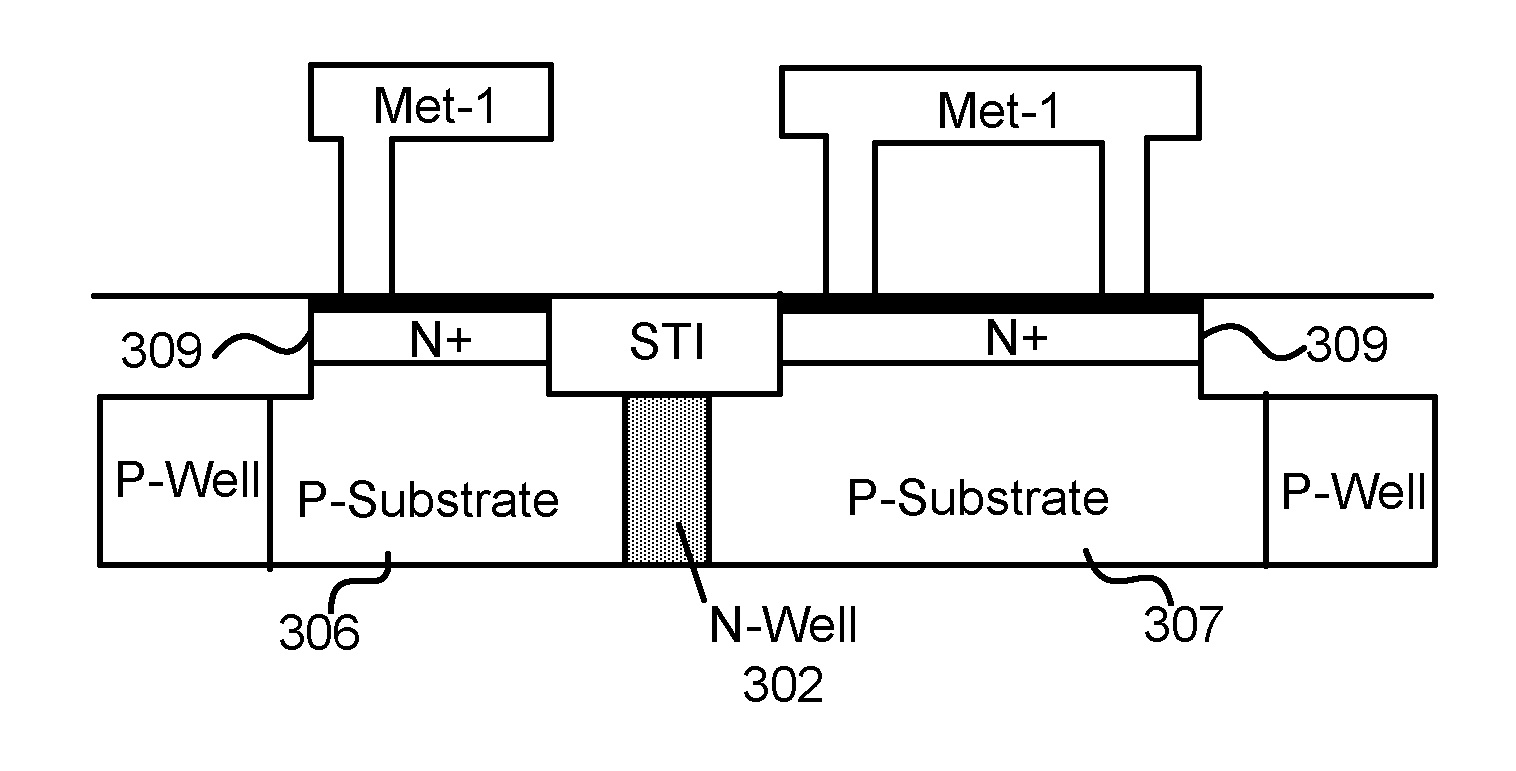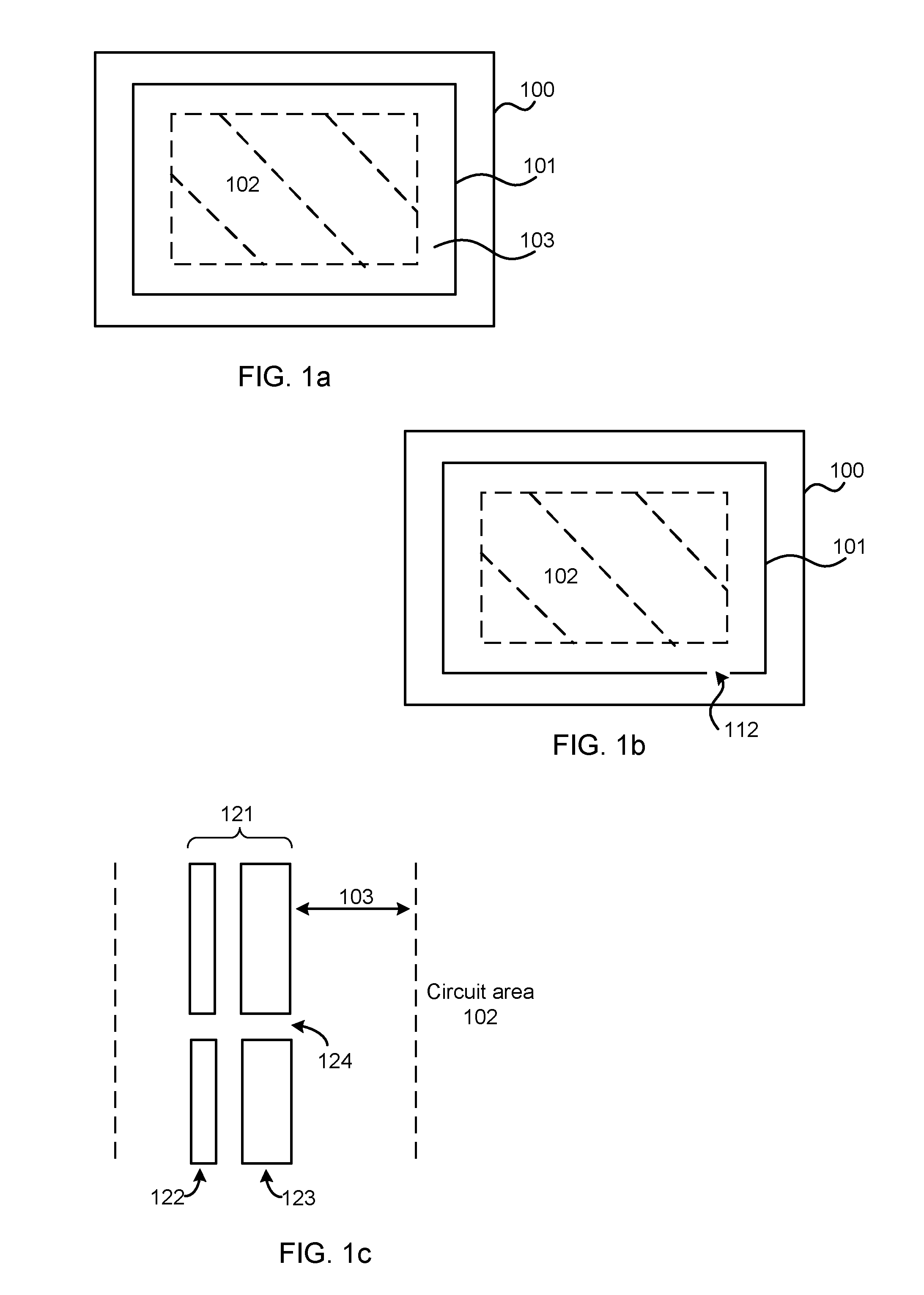Die seal ring
a technology of sealing rings and dies, applied in the direction of solid-state devices, basic electric elements, electric devices, etc., can solve the problems of dielectric layers, damage, such as chipping, and the risk of mechanical damage in assembly, so as to reduce the risk of mechanical sealing rings failure, reduce the risk of mechanical sealing rings, and increase the distance moisture
- Summary
- Abstract
- Description
- Claims
- Application Information
AI Technical Summary
Benefits of technology
Problems solved by technology
Method used
Image
Examples
Embodiment Construction
[0040]Embodiments of the present invention are described below by way of example only. These examples represent the best ways of putting the invention into practice that are currently known to the Applicant although they are not the only ways in which this could be achieved. The description sets forth the functions of the example and the sequence of steps for constructing and operating the example. However, the same or equivalent functions and sequences may be accomplished by different examples.
[0041]As described above, in order to reduce coupling of noise through the die seal ring around the perimeter of the die, breaks may be introduced into the die seal ring structure, as shown in FIGS. 1b and 1c. The area where these breaks occur may be referred to as ‘break cells’. Although the term ‘cell’ may refer to a structure which may be a library feature which is used in the layout process for the IC, any reference to a break cell herein refers only to a region of the die seal ring struc...
PUM
 Login to View More
Login to View More Abstract
Description
Claims
Application Information
 Login to View More
Login to View More - R&D
- Intellectual Property
- Life Sciences
- Materials
- Tech Scout
- Unparalleled Data Quality
- Higher Quality Content
- 60% Fewer Hallucinations
Browse by: Latest US Patents, China's latest patents, Technical Efficacy Thesaurus, Application Domain, Technology Topic, Popular Technical Reports.
© 2025 PatSnap. All rights reserved.Legal|Privacy policy|Modern Slavery Act Transparency Statement|Sitemap|About US| Contact US: help@patsnap.com



